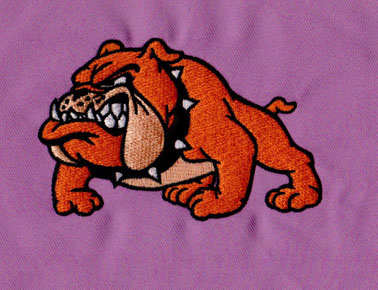How to See The Difference Between Single And Double Stitch on A Digitizing Embroidery Machine
When it comes to embroidery, there are a lot of different stitches you can use. One of the most common questions is which stitch should I use for what application? Here we’ll take a look at two of the most common stitches used on an embroidery machine: The single stitch and double stitch. Both have their pros and cons depending on what type of project you’re working on. Let’s take a closer look at each option from Eagle digitizing to see which one is right for you.
What
is a single needle?
A single stitch is a stitch made with a single thread. Single needles are great for outlining Outlines, monograms, and other decorative elements. They work well on lighter fabrics and are less likely to tear holes in the fabric than double stitches. Single needles are great for pillowcases, tablecloths, and other items that need to be cleaned regularly. They are great for decorative applications such as monogram, outline, and adding pop colors.
What
is a double needle?
Double
stitch is two parallel stitches made with two threads. They are great for
adding strength to items such as tablecloths and pillowcases, as well as
decorations such as monograms. Double stitches work best on heavier fabrics,
making them perfect for items such as tablecloths, pillowcases, and blankets.
Double stitches are great for adding strength to items, and some double
stitches are actually decorative. Just make sure you use the decorative stitch
option on the machine. Double stitches are also great for items such as tablecloths,
pillowcases, and blankets, as they add strength to your sewing project. Double
needles are also great for items such as monograms, as they add a decorative
element to the design.
Benefits
of single suture
Perfect for decorative applications -- Single stitch is great for adding decorative pop colors to your items. They are perfect for outlining, monogramming, and sewing letters and images in your projects. A single needle can also be used to stabilize the edges of the fabric to prevent fraying.
Lighter fabrics -- A single stitch is ideal for lighter fabrics, which can tear or be damaged by heavier stitches. Single stitch is great for decorative applications such as monogram, outline, and adding pop colors.
Great for quilting -- Single needles are great for quilting projects because they make fabric easier to move around. Single needles are also great for stabilizing fabrics and preventing them from fraying.
The
benefits of double stitching
Double needles are great for tablecloths, pillowcases, and other items that are cleaned regularly. Double stitches are great for holding fabric together and preventing tearing or tearing.
Perfect for heavy fabrics -- Double stitches work best on heavy fabrics, making them ideal for items like tablecloths, pillowcases, and blankets. Double needles are also ideal for regular washing items.
Great for decorative applications -- Double needles are also great for items such as tablecloths, pillowcases, and blankets, as they add strength to your sewing project. Double needles are also great for items such as monograms, as they add a decorative element to the design.
Great
for quilting -- Double stitches are great for quilting projects because they
allow fabric to move easily. They are also great for stabilizing fabrics and
preventing them from fraying.
How
to make a single stitch
There are several different ways to select stitches on your machine. Refer to the machine's instruction manual for specific instructions on how to select stitch on the machine.
Thread path - First, you need to select the thread path. This will determine which looper and hook the thread path is sent through on your machine. You need to choose the hook and the hook.
Stitch Width and length - Next, you need to select stitch width and length. A single needle is usually short, with a width of about 0.3mm.
Stitch type - Next, you need to select stitch type. Some machines have the option of single needles, while others have the option of decorative single needles.
How
to make a double stitch
Thread path - First, you need to select the thread path. This will determine which looper and hook the thread path is sent through on your machine. You need to choose the hook and the hook.
Stitch Width and length - Next, you need to select stitch width and length. A double stitch is usually longer than a single stitch and may be 0.7mm or larger in width.
Stitch type - Next, you need to select stitch type. Some machines have the option of a double stitch, while others have the option of a decorative double stitch.
The
difference between a single seam and a double seam on an embroidery machine is
that a single seam is a single thread, while a double seam is two threads.
Single stitch is great for decorative applications such as monogram, outline,
and adding pop colors. Double needles are great for washing items, heavier
items, and items that need reinforcement. Whether you are single or double
seaming, you need to make sure to use a stabilizer behind the fabric. This will
help prevent your machine from overfeeding or fabric wrapping around the feed
dog.


